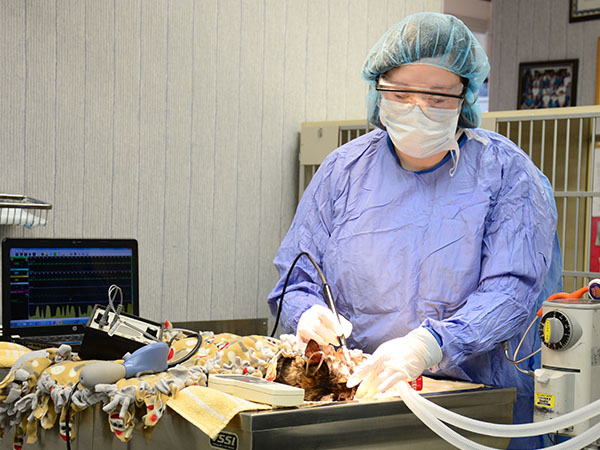WHY IS DENTAL CARE SO IMPORTANT?
DENTAL PLAQUE & TARTAR
Tartar and plaque buildup on teeth are one of the main sources of dental problems in pets. The same bacteria that cause plaque and tarter can spread to cause problems in the heart, kidneys and liver. Professional dental cleaning is indicated before there is significant tartar, bad breath, periodontal disease or a painful mouth. During a dental procedure (prophy), dental deposits are removed by power (Ultrasonics) and hand dental scalers. Following scaling, the teeth are polished to remove residual plaque and to smooth the tooth surface (which delays deposition of plaque and tartar subsequently). The mouth is rinsed to remove debris and plaque preventive material is applied. Many pets require a dental prophy every 6 months to prevent tooth loss.
Pet dentals require anesthesia for proper below the gum cleaning just like your dental care. X-rays tell the picture below the gums.
SYMPTOMS OF DENTAL DISEASE
Our own teeth are scaled by a dentist or hygienist-we sit in the chair and open our mouth when requested, letting the professional do their work. While the principles of good oral hygiene and dental health are the same for dogs and cats s for people, there are some significant differences. We understand why the procedure is important and we typically do not need sedation or restraint. This is not true for our pets. Another important difference between human and veterinary dental practice is that we tell the dentist when there is discomfort. To ensure that nothing is missed in dogs and cats, our patients require a thorough oral examination as part of a dental scaling procedure. We will recommend Digital dental radiographs to make sure the tooth roots are healthy and there is no bone loss.
A pet may not show signs of dental disease regardless of severity. But if you’ve experienced a broken or infected tooth, you know what it feels like. Periodontal disease is the most common source of oral pain in dogs, especially small breeds. And you can SMELL it better known as “doggie breath”. There is bacteria under the gums causing the odor.
Recent studies suggest that the healthier the mouth, the heathier the pet. Gun disease (gingivitis and its more severe counterpart, periodontitis), left untreated is the most diagnosed disease in cats and dogs. Gums disease means bone loss. And that means pain. By the age of 4 years old, 80% of dogs and 70% of cats will show signs of dental disease. More serious health problems like heart, liver and kidney disease will follow.
- Persistent Bad Breath
- Sensitivity around the mouth
- Pawing at the mouth
- Loss of Appetite
- Reluctance to Chew Hard food or Toys
- Bleeding, inflamed or receded gums
WHAT CAN YOU DO TO KEEP YOUR PET’S TEETH HEALTHY?
At Home Care
Brushing – This can be accomplished with a soft washcloth, or a soft pediatric tooth brush, or a finger brush.
Toothpaste – You can’t use human toothpaste with your pet because they will swallow it! There are several special products that you can purchase that are safe to use, and will taste good to your cat or dog too!
Treats – There are several different treats that we recommend that will help your pet’s teeth. For cats, there are the CET Chews, and for dogs, there are Chews or you can use the T/D diet! We do not recommend rawhide. It can cause some stomach upset and can also be a choking hazard!
Toys – There are many different toys on the market that can help with dental care. “Greenies” are a popular product available in pet stores, and Nylabones are a good alternative to rawhide because pieces cannot break off. If you have any questions about specific toys, please ask!

